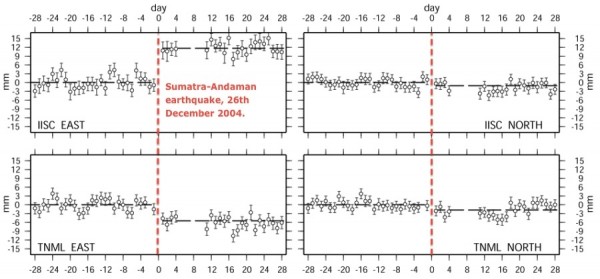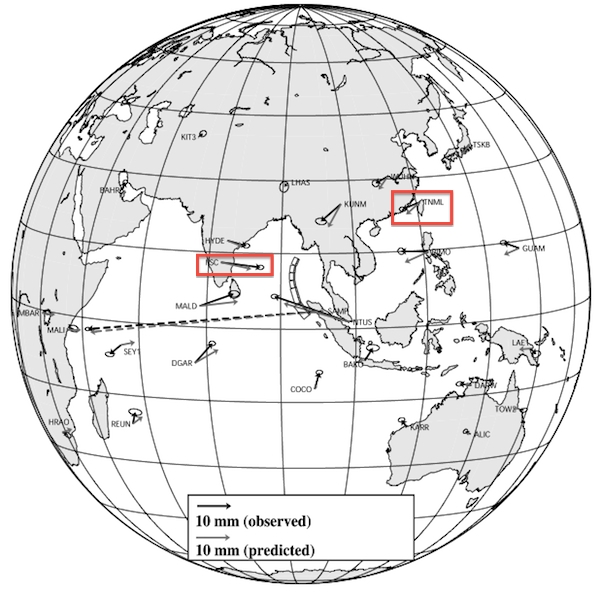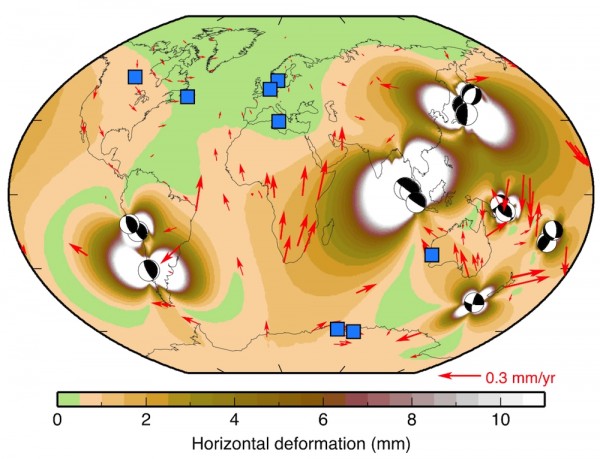This is a guest post from Alea Tuttle, a former graduate student of Anne’s at UNC Charlotte, who now works in environmental consulting. Alea recently discovered the 10 hundred words of science challenge and was inspired to write her own entry.* I think it perfectly captures the start-to-finish of restoration and its environmental aspects.
Part 1: How we make money by making wet places better
When people want to build things on top of wet places, or when they do bad things to wet places they are supposed to tell a group of people that watch out for the wet places. They figure out how much of the wet place that they did bad things to, which then gets turned into a number that people use to figure out how much money the people who build things have to give away. Then the people who look out for the wet places give the money to us to help other wet places that need help getting better. When we find a wet place that needs help, we use their money to buy the wet place and make it so that nobody can do bad things to it anymore and also to help the fix the wet place to make it better. Also we use some of the money to buy food and other things that we need and want while we are helping the wet places.
Part 2: What makes a wet place good or bad
We look at lots of different wet places and see if the water and the places around the water are good. When people grow food or build things near wet places, they do things that make the water and the places around the water bad for animals and people. The biggest thing people do is take away trees. We like to see enough trees and places where trees leave a shadow so that the water stays cool. If the water gets too hot it is bad for the animals in the water. We also like to see enough of the part of the trees that go under the ground to keep the ground from getting pulled away by the water. Sometimes people do things that make the water go in a straight line, but we like to see water move in a way that goes side to side like a wave, because that is the way that water likes to move. If the water isn’t moving, but staying still in a place that is low, we like to see that the water is keeping the ground wet, because sometime people to things to make the wet places dry out. We like to see places where there are a lot of different types of green living things instead of just a few types that grow really fast and keep others from growing. We like ones that have lived there for a long time and are good food for animals better than the ones from somewhere else. We like to see all of these things because this is what is good for the animals that like wet places and because it helps the water to be good for animals and people.
Part 3: What we do to make wet places better
If the wet places and the places around them are not good, we try to make them better. The easiest thing to do is to keep the animals that people grow for food away from the wet places because they can do bad things to the ground and the green living things, and the water. We also make it so that people can’t build things near the wet places. If the water is moving in a way that is not good or if the ground is drying up too much, we move the ground around and make the water move the way we want and keep the ground wet. We also take out the green living things that are bad (like the ones that come from somewhere else and grow too fast) and we put in other green living things that are good (like the ones that have things animals can eat, and that have been there for a long time) and also we put in lots of baby trees that will grow up and make shadows over the water.
Part 4: What we do to make sure we did things right
Sometimes the green living things that are bad come back because they grow a lot and very fast, and because the animals and people bring them back. This sometimes keeps some of the other green living things from growing, especially baby trees. Also, sometimes the water doesn’t go where we want it to go, even though we made the ground different. If that happens, it usually happens when a lot of water falls from the sky and makes the wet places fill up with more water than normal. So for seven years after we make all the changes to the wet places, we keep coming back every year to make sure the right green living things are growing, that the water is going where we want, that the ground is not being pulled away by the water, and that enough baby trees are still growing. We do this for a long time because we want to make sure things are good after a lot of water falls from the sky over and over again. For seven years, we make pictures of the wet places and write letters and numbers to tell the people who give us money and who own the wet places what is going on. After seven years, if everything is good enough, then we stop coming back. If after seven years, things are not as good as we want, we have to keep coming back. Usually we have to bring in more baby trees and make more pictures, letters, and numbers or even make some changes to the ground again. We try to do everything right the first time because it costs a lot of money to make the pictures, letters and numbers and to bring in more baby trees and change the ground, and also because it is bad for the wet places to be making so many changes all the time.
Part 5: The things I used to help me write these words and some other words some nice people that I like wrote on the computer
The up goer five: http://xkcd.com/1133/
The place on the computer to type things in: http://splasho.com/upgoer5/
The ten hundred words I can use: http://splasho.com/upgoer5/phpspellcheck/dictionaries/1000.dicin
The place on the computer where people read things: http://tenhundredwordsofscience.tumblr.com/
The other place on the computer where people read things: http://blogs.agu.org/sciencecommunication/2013/06/12/tiny-vocabulary-spurs-scientists-verbal-creativity/
*Anne’s note: While the 10 hundred words meme has gotten some criticism from some parts of the science journalism crowd, I still think it has value as a periodic exercise in figuring out ways to communicate science with less jargon. This pair of tweets from a Science Cafe in Maine reminded me how important it is to be mindful of vocabulary when talking with non-scientists.
Since no one has suggested we should always limit ourselves to the most common 10 hundred words, I can’t see how challenges like that undertaken but Alea can do anything but help.
It’s not too late to write your own 10 hundred words of science. If you do, please let us know and/or submit it to the Tumblr.
![]()
![]() We’ve both had a great week in Oregon, with some science (and, for Chris, some field excursions with Lockwood in the Coast Ranges) at the start of the week and some more recreational explorations at the end. This was the literal and figurative high point of our Friday:
We’ve both had a great week in Oregon, with some science (and, for Chris, some field excursions with Lockwood in the Coast Ranges) at the start of the week and some more recreational explorations at the end. This was the literal and figurative high point of our Friday:








Nice plan for content warnings on Mastodon and the Fediverse. Now you need a Mastodon/Fediverse button on this blog.